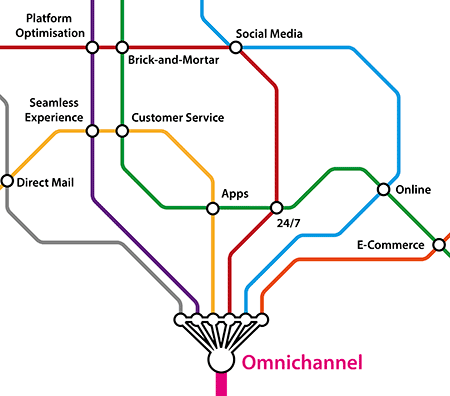Omnichannel investment is squarely aimed at increasing the availability of a wider assortment of products and improving the customer experience through better service.
By adding mobile enabled devices in stores to look up inventory across the organization, retailers will have the ability to “save the sale” and create an “endless aisle” scenario.
On average, out-of-stock merchandise costs retailers 4.1% in lost revenue.
Universal access to inventory data also helps with inventory turnover for locations that are carrying excess SKUs. From a competitive standpoint, access to inventory across channels saves sales lost to the competition, and opens up a higher likelihood of future purchases.
Customer service is also heavily impacted by omnichannel initiatives. Allowing customers to buy through any channel and return products to any channel has become table stakes. Omnichannel integration is critical for cross-channel loyalty programs and consistent promotions.
It is 10 times more expensive to acquire a customer than retain one, so offering differentiated customer service that provides consistency of the full customer experience is critical.
When defining the business case, there are some critical questions you need to ask:
- Do I have a system of record for customer, product, inventory and order/transaction data that can be easily accessed?
- How do I plan to use a unified data model to create a differentiated customer experience?
- Are my points of brand access (web, mobile device, call center, and POS) ready to create a unified experience for customers?
If you have answers to all these questions, you are ready to take your first step toward unifying the customer experience and the critical elements of your business.
Find out how to master your omnichannel approach and organize your order processing for the fastest turnaround in our new white paper, The Shift to Dynamic Order Management.




